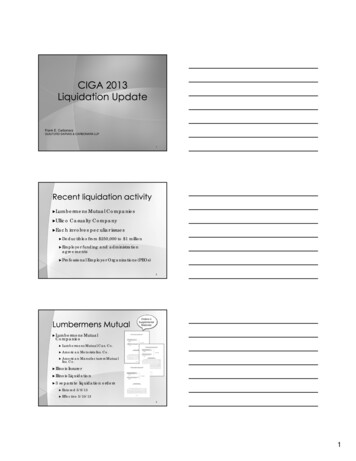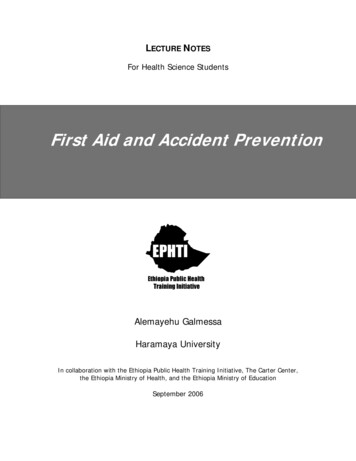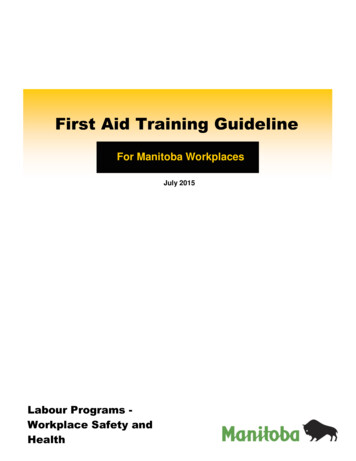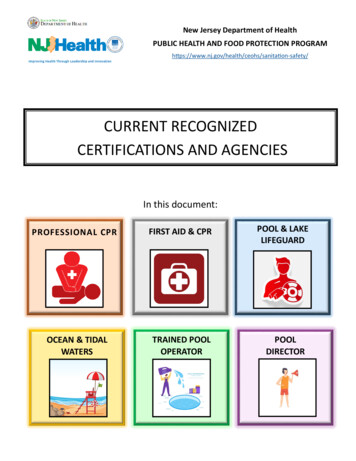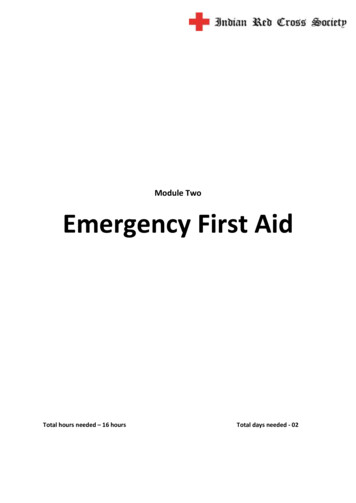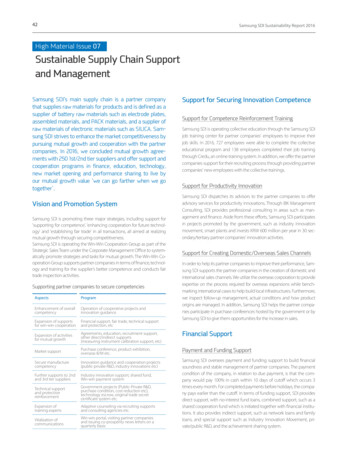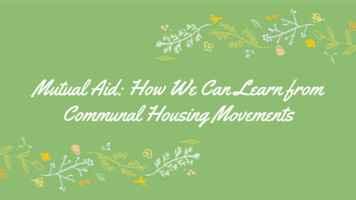
Transcription
Mutual Aid: How We Can Learn fromCommunal Housing Movements
Op-Ed Background: Communal Living What does it mean for us socially and psychologically when land andresources are held collectively versus privately? As people born into a culture wherethe private ownership of propertyremains a core tenet of success, canwe begin to envision versions ofsuccess and quality living that divergefrom the mainstream narrative,beginning with housing?Source: Google Images
Op-Ed Background: Communal Living Examples: communal households in Bangladesh, RobinKimmerer’s Braiding Sweetgrass, my personal experiences living incooperative housing Communal housing represented as an alternative lifestyle groundedheavily upon collaboration and the sharing of resources Culture of private ownership and fanatical individualism has causedus to become increasingly alienated from each other and ourcommunities.
Communal Households in Old Bangladesh Only 20-30 years ago (and still today in some pockets of the country),the cultural norm was for people to live in their ancestral homegeneration after generation. When a child gets married, the newfamily moves in rather than out. The Ekannoborti Poribar, or the“joint family” (literally: “one familyusing one kitchen”), usually livedin one compound consisting ofmultiple structures and shared theirresources and lives together.Family portrait of my father’s familyand ancestral home
Source: Braiding Sweetgrass “Council of Pecans” discusses the power of collectiveownership “Whether it was their homeland or the new land forcedupon them, land held in common gave peoplestrength; it gave them something to fight for. Andso—in the eyes of the federal government—that belief wasa threat” (Kimmerer, 17) “Stick together, act as one. We Pecans have learned thatthere is strength in unity, that the lone individual can bepicked off as easily as the tree that has fruited out ofseason” (Kimmerer, 18)Source: Google Images
Source: Braiding Sweetgrass “The leaders were offered the American Dream, the right to own theirown property as individuals They’d never be forced off their landsagain All they had to do was agree to surrender their allegiance toland held in common and agree to private property (Kimmerer, 18). By accepting citizenship, they ensured that their allotments could notbe taken from them. Unless, of course, a citizen could not pay histaxes Barely a generation after land was “guaranteed” through thesacrifice of common land converted to private property, most of itwas gone” (Kimmerer, 19).
As we all spend our time thinking about how to ensureour own survival, we spend more energy doing so. Trueto our self-sufficient natures, we turn to each otherfor help less often, and we utilize more naturalresources than we would if we shared some of itcollectively
Mutual aid efforts rely on our ability to turn toothers in our community for support.How can we build up successful mutual aidefforts if we do not feel comfortable with theidea of receiving help from others?
Source: Solidarity Not Charity by Dean Spade “.social movement activists and organizations face two particularchallenges.The first is how to address the actual changing conditionsthat are increasing precarity and shortening lives. The second is howto mobilize people for resistance” (Spade, 131) How do we mobilize people to get involved with forms of resistance inwhich we must fully rely on each other’s support?
Source: Inter-Cooperative Council Ann Arbor “Co-ops are organizations and businesses that are owned and operatedcollectively, for the mutual benefit of their members. In 1844, a groupof English textile workers formed a shop to purchase goods theycouldn’t afford by themselves. This group, later known as TheRochdale Society of Equitable Pioneers, was the first officialcooperative. Today, co-ops exist in variety of sectors, such as farming,retail, manufacturing, energy, and (of course) housing. Struggling college students established the firsthousing co-op in Ann Arbor in 1932”(Inter-Cooperative Council).
Source: Inter-Cooperative Council Ann Arbor Housing co-operatives in Ann Arbor essentially started off asmutual aid but wasn’t framed that way. Students during the Great Depression could not afford the price ofliving by themselves banded together to buy a house and sharemeals, establishing first housing cooperative in Ann Arbor Framed as a collective effort which succeeded because everyonepooled their resources. Everything was cheaper and more efficient,which made living possible.video: https://icc.coop/icc-community/icc-roots/
Summary Aid has become synonymous with charity, and who truly wants tobe the benefactor of charity handouts? Result of a lifetime functioning in privatized society We don’t feel entitled to ask for help Seeking help perceived as weakness Instead of another form of aid in which we turn to each other ratherthan to charities, we can reframe mutual aid as a way to createconditions for something new An effective way around psychological barrier is to ground mutualaid efforts in collaboration, rather than the idea of aid.
Instead of “what do I need” what if we thought:“What could I do with others that I can’t achieve alone”
Source: Braiding Sweetgrass "Council of Pecans" discusses the power of collective ownership "Whether it was their homeland or the new land forced upon them, land held in common gave people strength; it gave them something to fight for. And so—in the eyes of the federal government—that belief was a threat" (Kimmerer, 17)


